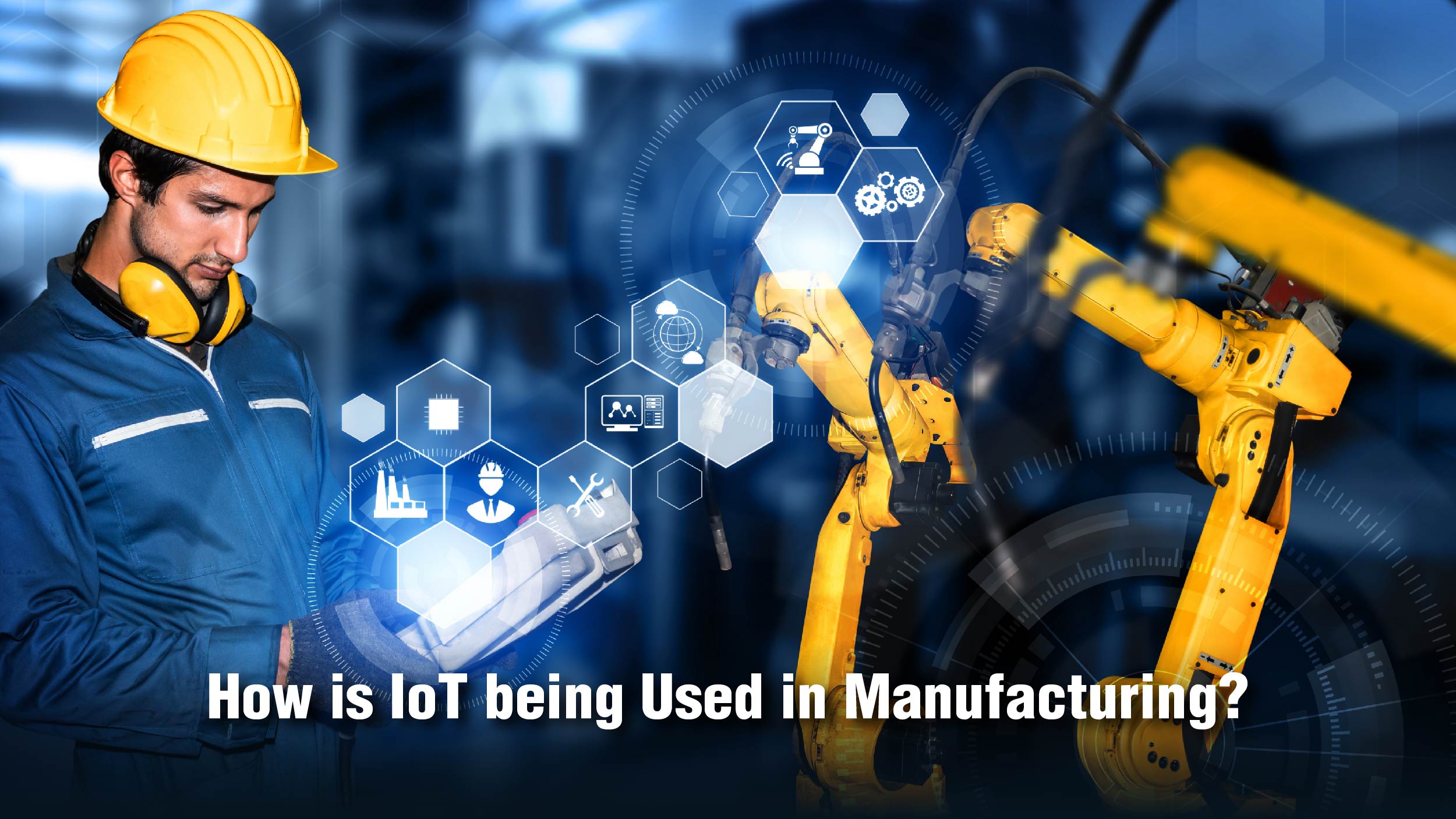The manufacturing industry faces persistent demands to enhance efficiency and productivity while simultaneously cutting costs. In response to these challenges, the Internet of Things (IoT) has emerged as a promising solution. By connecting physical objects equipped with sensors to collect and exchange data, the integration of IoT in manufacturing enables manufacturers to optimize production processes and minimize downtime.
Moreover, leveraging IoT technologies can enable manufacturers to develop innovative revenue streams and business models, thereby ensuring their competitiveness in the market. Deloitte‘s survey revealed that a majority, exceeding 86%, of respondents, see smart factory initiatives as the predominant force shaping manufacturing competitiveness in the next half-decade, yet only 51% have initiated or completed investments in this area.
What is IoT in Manufacturing?
The concept of IoT in the manufacturing sector represents a specialized segment within the broader framework of the industrial Internet of Things (IIoT), with a particular focus on manufacturing-related uses. The IIoT comprises a vast interconnected system of sensors and devices that interface with computer networks and specialized industrial software platforms.
The IIoT encompasses sectors like retail, utilities, and transport. In contrast, the IoT in the manufacturing sector focuses on employing interconnected sensors and devices for enhanced monitoring and production efficiency.
What are the Benefits of IoT in Manufacturing?

The benefits of IoT in manufacturing are manifold, some of them are listed below:
- Enhanced efficiency and productivity
- Decreased downtime and enhanced maintenance procedures
- Improved quality control and product design
- Augmented visibility into the supply chain through real-time data
- Heightened safety standards for workers
- Decreased expenses linked to inventory management and waste
Certain advantages stem directly from the enhanced data gathering ability and transparency of IoT systems.
For instance, manufacturers leverage the gathered information to anticipate maintenance requirements, thus preventing expensive downtimes. This involves identifying the most frequently utilized machines and their usage durations.
Enhanced quality control arises from monitoring goods from inception to completion in the manufacturing process and detecting production challenges at an early stage.
Additional advantages, such as cost savings in manufacturing, result from improved production process management. For instance, by being aware of dwindling levels of certain raw materials or supplies, a manufacturer can proactively place orders to prevent any interruptions in production.
How is IoT being Used in Manufacturing?

IoT in manufacturing has several applications that are transforming the industry:
Predictive Maintenance: The IoT plays an important role in predictive maintenance within the manufacturing sector. By linking devices and machinery to the web, it enables the real-time collection and analysis of data to proactively detect and address possible problems, averting operational interruptions.
Quality Control: IoT sensors help collect data that can determine which products match quality standards and must be inspected more closely. This holds particular significance for manufacturers adhering to quality standards like GMP and ISO.
Inventory Management: Manufacturers have been exploring small-scale logistics systems to address the rising demand for faster deliveries. The integration of IoT within the interconnected supply chain at the asset level is facilitating the management of inventory locations and providing enhanced insight into real-time inventory status across the intricate logistics framework.
Digital Twins: Digital twins, which are virtual replicas of tangible items, have significant advantages when implemented in manufacturing settings. By creating digital copies of machinery and components, engineers and supervisors can replicate various operations, perform trials, identify challenges, and attain desired outcomes without jeopardizing or harming actual resources. Based on a study conducted by PwC, a majority of manufacturers, numbering 90%, are confident that digitalizing the manufacturing procedures will yield greater rewards in the long run than risks.
Autonomous Machinery: Automated equipment has the potential to supplant labor-intensive and strenuous tasks previously carried out by humans, with specialists foreseeing this as the forthcoming trajectory of the manufacturing industry.
Data Collection and Analysis: IoT facilitates the gathering of information from various devices, enabling the optimization of business operations, production, quality control, resource utilization, consumption patterns, and more.
Wearable Technology: Several manufacturers have started implementing wearable technology for their workforce. Wearables have been integrated into the Internet of Things (IoT) from its early stages and are now being increasingly employed in industrial IoT settings. These devices enable management to monitor aspects such as employee posture and ambient noise levels, allowing for enhancements in working environments and potentially boosting productivity.
Revenue Generation and Business Models: The IoT has the potential to enable manufacturers to develop fresh revenue sources and innovative business strategies, ensuring they remain competitive in their industry.
Also Read: A Beginner’s Guide to Implementing IoT Data Analytics in Your Organization
Examples of IoT in Manufacturing
Listed below are some of the real-world examples of the integration of IoT in manufacturing.
1. Unilever
In 2019, Unilever and Microsoft collaborated on creating a digital twin of Unilever’s manufacturing facilities. This initiative allows real-time data transmission from the machinery to an Internet of Things (IoT) platform, empowering engineers with enhanced operational oversight. For instance, the digital twin analyzes production duration for shampoo bottles, aiding engineers in refining the manufacturing process. Likewise, it regulates moisture levels in Unilever’s soap-making equipment, ensuring uniform product quality.
Unilever has managed to achieve an annual cost savings of $2.8 million by implementing a digital twin at its Brazilian facility, leading to a drop in energy usage and a boost in operational efficiency.
2. Volkswagen
The Volkswagen Group, a leading European automaker for over eighty years, manufactures around 11 million vehicles annually. A recent initiative involved partnering with Amazon Web Services (AWS) to create the Volkswagen Industrial Cloud, aimed at updating their manufacturing and logistics operations within the automotive sector. This innovative platform integrates data from machinery, facilities, and multiple systems spanning over 120 factory locations using AWS IoT services. Forecasts suggest that the Volkswagen Industrial Cloud could potentially enhance efficiency by 30%, lower manufacturing expenses by 30%, and generate savings of €1 billion in supply chain costs.
3. Sealed Air
Sealed Air, a global producer of protective and specialized packaging for consumer products and cleaning solutions, sought to enhance energy efficiency and adherence to regulations for one of its products. To achieve this goal, the company enlisted ThingLogix to create an Internet of Things (IoT) system for monitoring its SoftCare soap dispensers. By deploying IoT-enabled dispensers, maintenance staff are promptly alerted when soap levels are running low and can track soap consumption by staff members. Consequently, this initiative reduced manual intervention during refills and promoted better compliance with hygiene standards.
What is the Future of IoT in Manufacturing?
The upcoming years foreshadow a manufacturing environment marked by enhanced connectivity and data collection. The combination of IIoT, along with 5G and AI, offers the potential for revolutionary procedures, efficient activities, and enhanced client interactions. The focus continues to be on effectiveness, with instant data interpretation influencing smart choices, even in distant locations. This integrated progression symbolizes the unavoidable direction of manufacturing in the future.
Closing Remarks
The integration of IoT in manufacturing has revolutionized the industry, ushering in an era of unprecedented efficiency, predictive maintenance, and data-driven decision-making. From predictive maintenance and quality control to inventory management and the creation of new revenue streams, IoT has become an indispensable tool for manufacturers seeking to stay competitive in a rapidly evolving landscape. While challenges such as the skills gap and infrastructure integration persist, the potential for growth and innovation through IoT in manufacturing is undeniable. As the industry continues to embrace this technology, it is poised to unlock new levels of productivity, cost-effectiveness, and operational excellence, shaping the future of manufacturing in profound ways.




